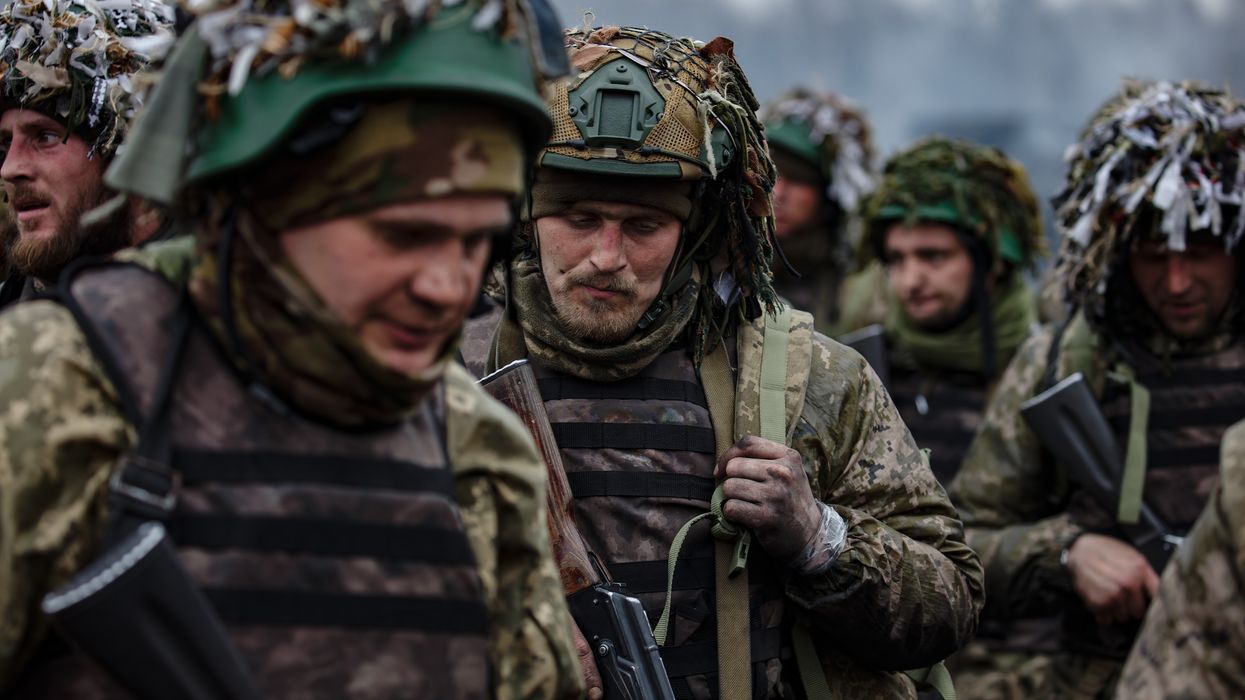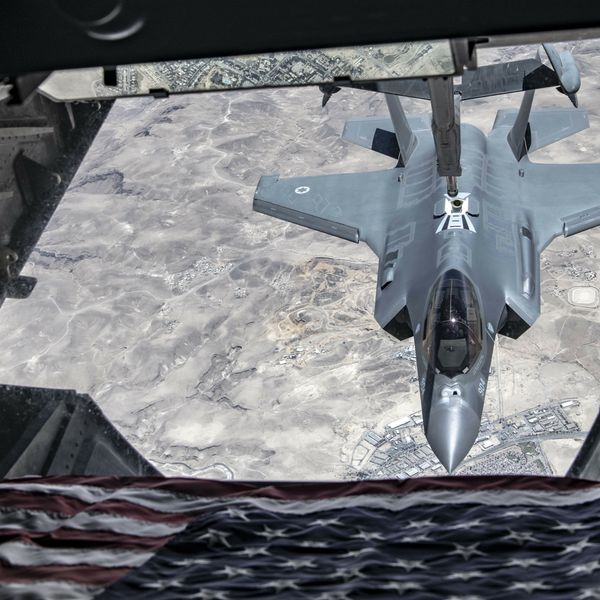Three weeks after the United States’ January 3 assassination of Gen. Qasem Soleimani, how likely is the eruption of a US-Iran shooting war, what paths might lead to it, and what factors might brake or reverse the trend towards war?
Two weeks ago, I wrote about how, despite the extremely sharp escalation in tensions that immediately followed Soleimani’s killing, five days afterwards it became clear that Washington and Tehran had stepped back -- for now -- from the brink of cataclysmic outright war. Principally, that outcome was the result of Tehran’s carefully calibrated crisis management. Iran’s response to Soleimani’s killing was an almost (though not wholly) symbolic attack on the US base at Ain al-Asad in Western Iraq… and Tehran gave Washington enough advance warning to allow US personnel on the base to get to their bunkers, thus avoiding any serious US casualties.
At that point, the threat of an outright shooting war receded considerably. But on January 10, Secretary of State Mike Pompeo announced sharp new economic sanctions on an Iran already reeling under under the effects of existing US sanctions, and Washington has continued to employ other elements of what Max Blumenthal has dubbed “hybrid warfare” -- incitement of opposition movements, repeated provocations, information operations, etc -- against Iran. For example, in 2018, the DC-based National Endowment for Democracy (NED) budgeted $872,400 for various, mainly opposition-boosting projects within Iran, and those funds likely became disbursed throughout 2019.
And the military situation inside (and alongside) the Persian/Arabian Gulf and neighboring waterways remains tense. 2019 saw a number of localized attacks and flare-ups in that region in which the US and allied navies have a large on-sea presence and sizeable bases, and in which air-defense systems are often poised on a hair trigger. The most significant of those attacks was September’s “swarming” attack by around two dozen attack drones that put Saudi Arabia’s Abqaiq oil field offline for several weeks. (The effectiveness of that attack powerfully demonstrated to the super-vulnerable Saudis and their GCC neighbors that any shooting war against Iran could bring massive, possibly catastrophic, blowback against themselves. It powerfully buttressed the deterrence Iran was able to project toward the GCC states and thus greatly reduced the incentive those states had to provoke -- far less to join -- any US attack against Iran. The widely noted accuracy of Iran’s January 8 attack against the Ain al-Asad base in Iraq underlined that message.)
Meanwhile, in Iraq -- a key locus of chronic political and paramilitary competition between pro-Iranian and (often US-backed) anti-Iranian factions -- that competition has definitely heated up over the past ten days. Iran’s Supreme Leader, Ayatolloah Ali Khamene’i, has insisted that he wants the 5,000-plus US troops who deployed back to Iraq in 2014 to meet and help destroy the ISIS threat there, to leave as soon as possible.
Two days after the Soleimani killing, the Iraqi parliament voted to ask the US troops to leave. US officials insisted that the troops are not leaving; and an intense struggle has erupted in many parts of Iraq over this issue. The largely anti-Iranian protest movement in southern Iraq, that had muted its actions immediately after the Soleimani killing, has now resumed its mobilization. (In 2018, NED budgeted $2.570 million for activities inside Iraq that included many linked to just such a mobilization.)
US-Iranian “shadow wars” for influence also continue in Syria and Lebanon. Iran has powerful local allies in both those countries who are well embedded in the national governments and whose sway the United States (and Israel) have been working hard to reduce for many years now. A rapid escalation of tensions in either Syria or Lebanon, or in Iraq, could easily spur a rapid eruption of new tensions between the US and Iran itself.
Robert Hunter’s Scenarios
So, taking the above into account, what are the current prospects for war or de-escalation between Iran and Washington?
One person who has attempted to answer that question is Amb. Robert E. Hunter, someone who combines the experience he gained when he was director of Middle East and North Africa affairs in Pres. Carter’s White House with the experience he later gained as Pres. Clinton’s Ambassador to NATO. In this recent article, Hunter laid out four possible scenarios for how the dynamic might evolve. (Though later in the piece, he expands one of them into a fifth.)
These are:
1. Iran’s clerical leadership might be overthrown, a scenario he describes as “possible but not yet likely.”
2. Iran’s leadership might respond to American pressure “by agreeing to negotiate a new nuclear agreement” that would include other Western objectives beyond what was agreed in the derogated-by-Washington JCPOA. (“This is a tall order… But Iran’s leadership, facing a rising internal, regime-threatening crisis, might be open to at least some” of Washington’s additional demands.)
3. Washington might, essentially, back down significantly by offering to remove “major elements of sanctions, as well as the goal of outside-provoked regime change.”
4. “Iran might now move rapidly toward getting its first nuclear weapon.”
He describes this fourth scenario as carrying the greatest risk, namely that, “Iran’s renewed nuclear work could progress to the point that the U.S. would need to redeem Trump’s pledge that ‘Iran Will Never Have A Nuclear Weapon!’ That means war.” Then, he immediately introduces his fifth scenario: “Another Afghanistan or Iraq.” He writes that,
War would lead to a fifth scenario: “now what?” Nearly 19 years of experience in Afghanistan and 17 years in Iraq should breed caution in Washington and a fundamental calculation of all U.S. regional interests that has so far been lacking. This experience should mandate all efforts possible to get out of the accelerating move toward the fourth scenario.
Deterrence Theory from the Perspective of the Deterree
Hunter’s article brings to mind a field of study that hasn’t been pursued much in the United States until recently, namely “deterrence theory from the perspective of the deterree.” Because of course, in all the interactions the Iranian government and its close allies have had with their regional (and international) rivals it is not only the GCC countries that have, as noted above, been deterred by the prospects of the Iranian alliance being able to inflict unacceptable damage on them. Israel has also been similarly deterred -- especially by Hizbullah, in Lebanon, since 2006. And for at least 17 years now it has been clear that, despite all the swagger and bravado with which US naval vessels roam the Gulf, their leaders have also understood that it is impossible to “win” in an outright shooting war against Iran. That was the lesson brought home by the extensive (though ultimately, rigged) “Millennium Challenge” war-games the U.S. military ran in the Gulf in 2002. Both sides have doubtless worked hard to improve their planning and performance in the years since then. But the capabilities, especially in targeting and in command-and-control of complex operations, that Iran and its allies demonstrated at Abqaiq and Ain al-Asad certainly gave any strategists planning a future large-scale attack against Iran whole new layers of extremely tough scenarios to worry about.
“A game-changer,” was how MIT’s Prof. Ted Postol summed up the lessons from Abqaiq. And that was before Ain al-Asad.
War Risk Not Gone
Most people around the world breathed a sigh of relief as the intense war-worries that assailed us on January 3 started dissipating rapidly after January 8. But Iran’s 83 million people are still hurting very badly, as a result of the “maximum pressure” sanctions that Pres. Trump has imposed on them. So are Iraq’s 39 million people -- from a multiplicity of causes, not least Washington’s policy of deliberating breaking up their country’s capabilities after its invasion in 2003… And Syria’s 17 million people have suffered extremely grave damage from Washington’s feckless, years-long waging of hybrid war against their government. So we cannot yet say that the war between the United States and the Iranian-led alliance has ended. We can say that the US campaign against Iran and its allies has for now has been pushed into forms that are less immediately lethal and disruptive of international peace and security than an outright war would have been.
But sanctions kill! As we should all remember from the tragic history of the sanctions that the US persuaded the UN to maintain against Iraq, 1991-2003. The UN estimated those sanctions killed more than 500,000 Iraqis. Now, Washington wants to enforce an equally tight set of sanctions against Iran and against Syria -- and Trump has even threatened to impose tight sanctions against Iraq if the Iraqi government insists on expelling the US military forces and contractors who have been there since 2014.
(We would be remiss if we failed to note that the Israeli government which, along with its many acolytes inside the United States, has been a big driver of many American anti-Iran campaigns over the course of many years, has also pioneered the use of “maximum pressure” sanctions against the two-million population of Gaza throughout the past 13 years, to quite devastating effect.)
What Can Break the Stand-Off?
So what can break the current standoff between American and Iranian power? It is highly unlikely that any European powers will play this role. As I see it, the best hope for the kind of leadership in international diplomacy that is needed to break the current logjam is the hope that some combination of Russia, China, and the smaller “BRICS” powers can broker a peace between the parties that will allow all foreign fighting forces to return home and allow the peoples of the region to start to heal their wounds and rebuild countries devastated by war, sanctions, and harsh internal divisions.
Obviously, this will not be easy. The international community has a lot of other issues to worry about, including the various trade wars launched by Pres. Trump, the challenges of negotiating a viable peace (at last!) in Afghanistan, and the continuing threats -- including in Iraq and Syria -- from ISIS, Al-Qaeda, and other takfiri forces.
But there are some modest reasons to think that some form of an internationally brokered deal between Washington and Iran might be possible:
1. The United States is not nearly as commanding force inside the UN now as it was in the 1990s. Back then, it could often bend the UN to its will, including over the issues of sanctions against Iraq. Now, in contrast, many (though not all) of the current rounds sanctions against Iran and Syria are unilateral US sanctions, that are enforced by Washington through its command of the SWIFT system for international payments. Russia and China have talked about setting up an alternative to SWIFT, and have also been exploring various barter arrangements with Iran.
2. Russia has demonstrated a sure grasp of the complex diplomatic skill and breadth of understanding of the region’s dynamics that can enable its diplomats to contribute creatively to the required diplomacy. Russia has good working relations with all the relevant actors (except, perhaps, today, with Washington; a situation that needs to change.)
3. China brings its considerable economic heft to the table, as well as a non-trivial diplomatic presence in this region, which lies at the western end of its own home continent. Beijing has been careful not to over-extend itself in the region. But it has considerable interests in the countries both north and south of the Gulf. In 2016, Pres. Xi Jinping made prestigious visits to Egypt, Saudi Arabia, and Iran. Last year, Iraq’s Prime Minister Adel Abdul-Mahdi visited Beijing.
4. The GCC states, especially UAE and Saudi Arabia, were until recently seen as major forces critical of the JCPOA and urging greater US pressure against Iran. After the attack on Abqaiq, and even more after the tensions stoked by the killing of Qasem Soleimani, that stance seemed to change. Given the power that Saudi Arabia’s and the UAE’s de-facto leaders exert on decisionmaking in Washington, including through the personal relationships they enjoy with members of the Trump-Kushner clan, it is possible that they might both help persuade the President to back down some from his policy of suffocating “maximum pressure” on Iran and help him find a face-saving way to achieve this…
Thus, as I said above, it is possible that a serious de-escalation between Washington and Tehran might be achieved through smart, engaged international diplomacy. (Note that I don’t even mention any European role in the above list… ) If this does happen, regarding the oft-hyped Iranian nuclear issue, we might see something like a reinstatement of JCPOA. But numerous other issues of contention would need to be resolved as well. Any such negotiated stand-down would involve some pain for all parties. But such is the nature of negotiation.
And the alternative to that would be… ? A continuing, quite horrendous risk of a cataclysmic regional or global war.
This article was republished with permission from Just World News.
















